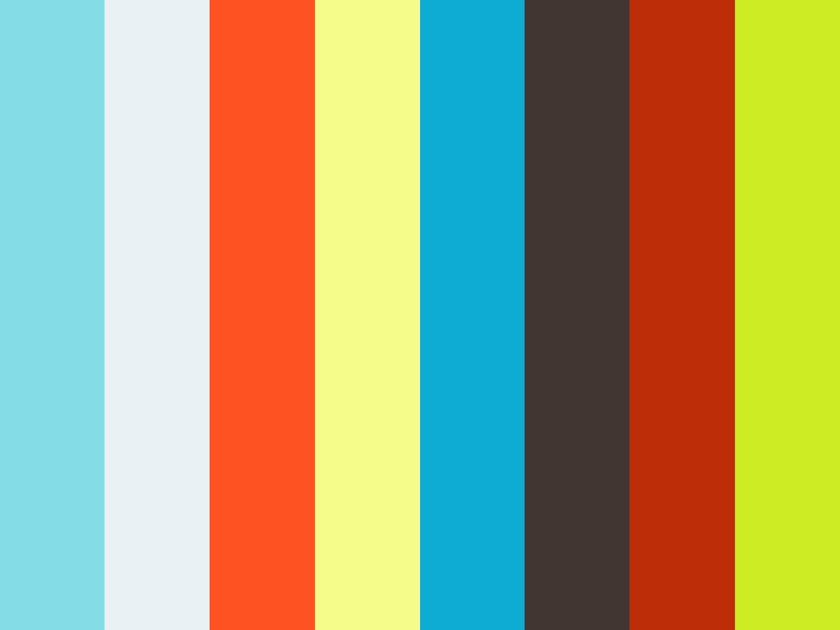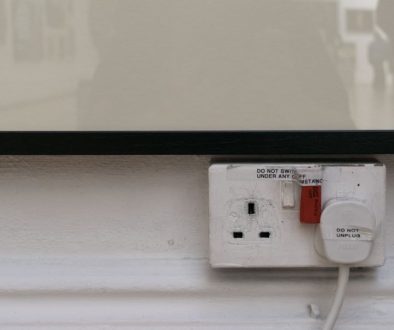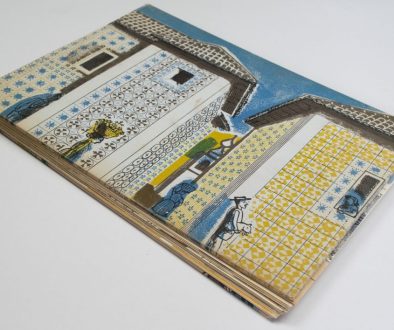Art on Paper Types
We recently acquired a set of ten prints on different papers. The etchings of a fisherman are by Audrey Lewis-Hopkins (1914 – 2011) who was an artist based in Bristol. I have written about the different paper types she used below, but first a little about Audrey.
She studied at the West of England College of Art under Paul Feiler (1918 –2013), who taught there before moving to Newlyn in 1975. Audrey is not a ‘well-known’ artist, but this little etching of a The Fisherman shows her skill as a draughtswoman. She worked mostly in oils, but also experimented with cotton thread sculpture in the 60’s. She exhibited with the London Group and at the Royal Academy in London, the RWA in Bristol, and Audrey had a shared exhibition with the British artist Ralph Cowan at the Alwin Gallery, Brook Street in 1967.
This little set of Fisherman etchings were printed on test papers. There are just ten images on a range of paper print surfaces. A note on the envelope that they had been stored in states that they were from “Bill’s Redgrave Studio, St Ives”. This was the British sculptor William Redgrave (1903 – 1986) who, in the 1950’s, ran an art school in St Ives with Peter Lanyon (Francis Bacon rented a studio from them there). You can see a little of St Peters Loft School of Art in the video below.


The Summer Schools run by Lanyon, Frost and Redgrave were based in an old pilchard packing factory and sail lofts. The studio complex still exists and currently houses 11 artist studios.
I love the idea of Audrey experimenting surrounded by the leading lights of British Modern art, exploring form, style and technique and coming up with this iconic Cornish fisherman figure, created in the heart of the St Ives School, fizzing with ideas. Six of the prints have Audrey’s initials in the plate (1, 3, 4, 5, 7, 8), which may suggest she was more satisfied with these attempts. He is a delightful chap in all his forms, initialled or not, and I think it goes to show that ‘good art’ can be affordable and delightful, and that you can catch the essence of an artistic movement without having the big names. If however, you are interested in the St Ives School, we have works by Peter Lanyon, Anthony Benjamin, Roger Hilton and Karl Weschke, as well as a few other Cornish treats.
Paper Types
These ten little fishermen provide a good opportunity to explore some different paper types. The history of paper is a fascinating subject. One that my friend and mentor Charlotte at PaperBack Conservation studio has made an extensive study of. She has even created a map to track the history of paper migration.
For us paper geeks working in paper conservation, as with artists and creators, it is important to understand the types of paper used, their inherent qualities and disadvantages, how they have been made, and how to approach them (sometimes on tip-toes!) In this collection of fisherman prints, there is a range of papers, showing how a print maker will experiment with different weights and types of paper, the papers’ qualities of absorbency, and what kind of impact these can have on the finished image, both at the time of production and over the print’s lifetime.
Two of the prints are on thin cheap paper made of wood pulp. You can see the wood pulp fibres in the surface of the paper. The paper is yellow – and this is after a good clean. It was a dull brown when they arrived in our studio. Wood pulp has a high acid content, and this turns the paper yellow over time, just as you will see picking up a cheap old paperback book. The smell of musty old paperback books is not the smell of disintegrating literature, or of the paper itself, but of the acid in the paper degrading the fabric of the material. Cleaning the prints washes out some of the acid and rebuilds some of the chemical bonds within the paper structure, helping it to regain some strength. This shows in the increased flexibility of the paper as it is conserved. The brittle quality created by the breakdown of chemical bonds lessens in a way that makes science look like magic. The addition of a calcium buffer to the paper counters the effects of the acid, and protects the paper from further damage in the future. These two chaps are protected for the future now.
Two are printed on thin chain and laid paper. Laid paper is created by dipping a wire mesh sieve into paper pulp. The pulp is spread evenly over the sieve which is shaken, allowing the fibres of the pulp to mesh together. As the water drains between the wires, the imprint of these is left in the paper, creating a lined effect. Watermarks are also be added into the fabric of the paper in this way. The more widely spaced ‘columns’ are the ‘chain lines’ around which the thinner wires are wrapped – creating the ‘laid lines’. The surface of the paper is textured by these lines, which will impact the look and feel of the printed image.
Four of the prints are on wove paper has a smooth surface finish. Wove paper was developed by James Whatman for the printing industry and it is now the most widely used paper type. Wove paper, as with any other comes in a range of weight and quality. High quality art paper is created using cotton rag (hence the original meaning of the ‘rag and bone man’ made famous by the BBC series Steptoe and Son). The cotton rags were used to create the paper pulp and bones to make the paper sizings.
One of the paper types used has a Watermark in the paper across the image that is visible when held against the light. It is an image of a crown with the words Eden Grove Bond Tub Sized – Air Dried 8. Watermarks are a whole other delight for paper geeks, some of which are magnificent!
For artists, collectors and conservators, understanding the materials is key to understanding how artworks will age, how to look after them, and how to rescue artworks that have been neglected. This charming etching of a figure is a delightful snippet of social history and the St Ives community. If you’d like one of these ten etchings for your wall, take a look at our online shop.





